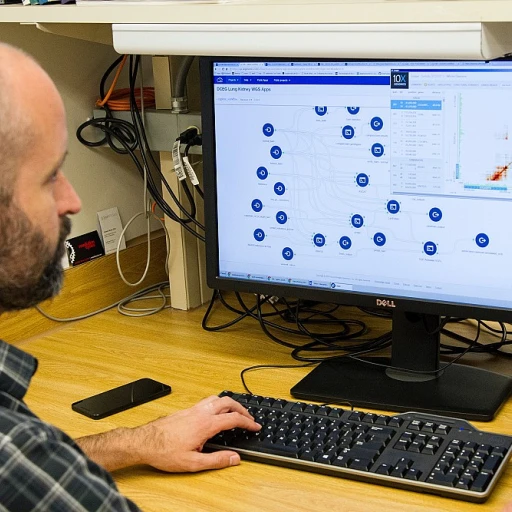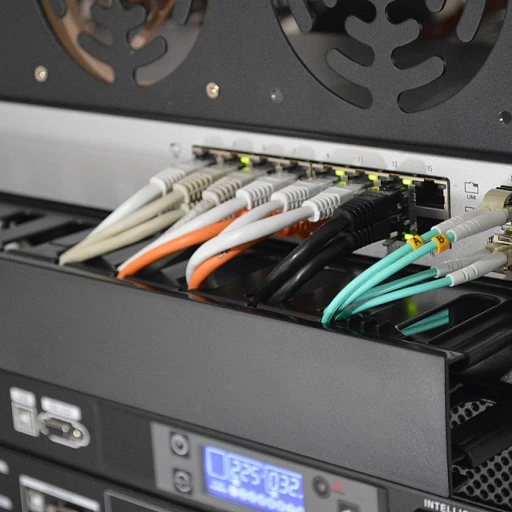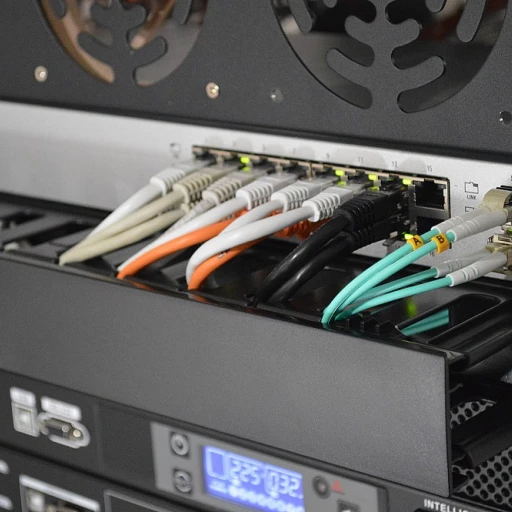
Understanding Hypersonic Navigation
Decoding the Complexities of Hypersonic Navigation
Hypersonic navigation represents a frontier in aerospace technology, where vehicles travel at speeds exceeding Mach 5. This realm of navigation requires a sophisticated blend of systems and algorithms to ensure precise control and guidance. At the core of this technology is the integration of advanced navigation systems, such as strapdown inertial navigation systems (SINS) and GPS, which work in tandem to provide real-time data on velocity, position, and trajectory.
The hypersonic flight environment presents unique challenges due to the extreme speeds and altitudes involved. These conditions demand a robust navigation algorithm capable of processing data within an earth-centered, earth-fixed (ECEF) frame. This ensures that the hypersonic vehicle maintains its intended path, whether it is a missile or a boost glide vehicle. The tightly coupled integration of these systems is crucial for maintaining accuracy and reliability.
In the defense sector, companies like Northrop Grumman are at the forefront of developing these technologies. Their work in hypersonic weapons and vehicles underscores the importance of advanced navigation systems in modern military applications. The development of these systems is not just about speed but also about precision and control, ensuring that hypersonic vehicles can navigate complex environments effectively.
As we delve deeper into the intricacies of hypersonic navigation, it becomes evident that the technology is not just about reaching high speeds but also about achieving unparalleled accuracy and reliability. For more insights into the technological advancements shaping this field, you can explore the emerging software technologies that are driving these innovations.
The Role of AI in Enhancing Navigation Systems
AI's Transformative Impact on Navigation Systems
The integration of artificial intelligence into hypersonic navigation systems is revolutionizing how these systems operate. AI enhances the precision and reliability of navigation algorithms, crucial for the success of hypersonic vehicles. These vehicles, which travel at speeds exceeding Mach 5, require navigation systems that can process data in real time and adapt to rapidly changing conditions.
AI-powered navigation systems employ advanced algorithms that can analyze vast amounts of data from various sources, such as GPS, strapdown inertial navigation systems (SINS), and other integrated navigation technologies. By doing so, they provide accurate velocity and position information, which is essential for maintaining control during hypersonic flight.
One of the key advantages of AI in navigation is its ability to operate within a tightly coupled framework. This means that AI can seamlessly integrate data from different sensors and systems, such as the LCEF frame and LCI frame, to create a comprehensive picture of the vehicle's environment. This integration is vital for hypersonic boost and glide vehicles, which must navigate complex trajectories and avoid obstacles at high speeds.
Moreover, AI enhances the development of navigation systems by enabling adaptive learning. As these systems encounter new scenarios, AI algorithms can learn and improve their performance, leading to more robust and reliable navigation solutions. This capability is particularly important for defense applications, where hypersonic weapons and missiles must operate with precision and accuracy.
Companies like Northrop Grumman are at the forefront of developing AI-enhanced navigation technologies. Their work in this field is paving the way for more advanced and integrated navigation systems that can meet the demands of future hypersonic vehicles.
For businesses looking to leverage AI in their operations, exploring AI integration services can provide valuable insights and strategies. These services can help organizations harness the power of AI to enhance their navigation systems and other critical technologies. For more information, you can explore AI integration services that are shaping the future of navigation and beyond.
Challenges in AI-Enabled Hypersonic Navigation
Overcoming the Complexities of AI-Driven Hypersonic Navigation
As we delve into the intricacies of AI-enhanced hypersonic navigation, several challenges emerge that need addressing to ensure the successful deployment of these advanced systems. The integration of artificial intelligence into hypersonic vehicles presents both technological and operational hurdles that must be overcome.
One of the primary challenges is the development of robust navigation algorithms capable of operating in real time. These algorithms must process vast amounts of data from various sources, such as GPS, inertial navigation systems (INS), and strapdown inertial navigation systems (SINS), to provide accurate and reliable guidance. The tightly coupled nature of these systems requires seamless integration to maintain precision during hypersonic flight.
Another significant challenge lies in the control systems of hypersonic vehicles. The extreme speeds and altitudes at which these vehicles operate necessitate advanced control mechanisms to ensure stability and maneuverability. The boost glide phase, in particular, demands precise control to transition smoothly from powered flight to gliding.
Furthermore, the frame of reference used in navigation, such as the Local Centered Earth Fixed (LCEF) frame, must be accurately maintained to ensure the vehicle's position and velocity are correctly calculated. This requires sophisticated algorithms and real-time processing capabilities to adapt to the dynamic conditions of hypersonic flight.
Security is another critical concern. The integration of AI into navigation systems introduces potential vulnerabilities that could be exploited by adversaries. Ensuring the security and resilience of these systems is paramount, especially in defense applications where hypersonic weapons and missiles are involved.
Finally, the development and testing of these technologies require substantial investment and collaboration among industry leaders, such as Northrop Grumman, and government entities. The complexity of hypersonic navigation systems demands a concerted effort to push the boundaries of current technology and achieve breakthroughs in this field.
For more insights into the evolution of software in related technologies, you can explore the evolution of software in wearable technology.
Current Innovations and Developments
Innovative Developments in Hypersonic Navigation
In the realm of hypersonic navigation, recent advancements are paving the way for more precise and reliable systems. The integration of AI with traditional navigation frameworks like GPS and strapdown inertial navigation systems (SINS) is at the forefront of these developments. These integrated navigation systems are crucial for managing the unique challenges posed by hypersonic vehicles, which travel at speeds exceeding Mach 5.
One of the key innovations is the development of tightly coupled navigation algorithms. These algorithms allow for real-time data processing, enhancing the accuracy of velocity and position calculations. By utilizing an earth-fixed, centered earth (LCEF) frame, these systems can maintain stability and precision even during the rapid maneuvers of hypersonic flight.
Companies such as Northrop Grumman are leading the charge in creating advanced control systems for hypersonic vehicles. Their work focuses on integrating AI to improve the responsiveness and adaptability of navigation systems, which is essential for both defense applications and civilian uses. This includes the development of hypersonic boost-glide vehicles, which require sophisticated navigation solutions to manage their unique flight profiles.
Another area of significant progress is the enhancement of strapdown inertial navigation systems. These systems, which do not rely on external references, are being refined to offer better performance in hypersonic environments. The use of AI in these systems helps to mitigate errors and improve the overall reliability of the navigation process.
As these technologies continue to evolve, they hold the potential to revolutionize various industries. From defense to commercial aviation, the ability to navigate at hypersonic speeds will open new frontiers in transportation and logistics. The ongoing development of these systems is a testament to the transformative power of AI in modern technology.
Potential Applications Across Industries
Expanding Horizons with Hypersonic Technology
As hypersonic technology continues to evolve, its potential applications across various industries are becoming increasingly apparent. The integration of advanced navigation systems, including AI-powered algorithms and strapdown inertial navigation systems (SINS), is paving the way for significant advancements in both civilian and military sectors.
Military and Defense Applications
In the defense sector, hypersonic vehicles and weapons are at the forefront of technological development. These systems, capable of traveling at speeds exceeding Mach 5, require precise navigation systems to ensure accuracy and effectiveness. Companies like Northrop Grumman are investing in tightly coupled navigation systems that integrate GPS and inertial navigation to enhance the control and guidance of hypersonic missiles and boost glide vehicles. The ability to maintain real-time velocity position and control during hypersonic flight is crucial for the success of these defense systems.
Civilian and Commercial Uses
Beyond military applications, hypersonic technology holds promise for the commercial aviation industry. Hypersonic vehicles could revolutionize air travel by drastically reducing flight times. The development of integrated navigation systems, utilizing the LCEF frame and LCI frame, will be essential for ensuring the safety and efficiency of these flights. Additionally, the potential for hypersonic boost technology to be applied in space exploration and satellite deployment is being explored, offering new possibilities for the aerospace industry.
Challenges and Opportunities
While the potential applications of hypersonic technology are vast, several challenges remain. The development of robust navigation algorithms and systems that can withstand the extreme conditions of hypersonic flight is ongoing. However, the continued advancement of AI and real-time data processing offers promising solutions to these challenges. As industries continue to invest in research and development, the future of hypersonic navigation systems looks promising, with the potential to transform various sectors.
Future Prospects and Considerations
Emerging Trends and Future Directions
As we look ahead, the future of AI-powered hypersonic navigation systems appears both promising and challenging. The integration of advanced navigation algorithms with real-time data processing capabilities is expected to revolutionize how hypersonic vehicles operate. These systems will likely become more sophisticated, leveraging tightly coupled inertial navigation and GPS technologies to enhance accuracy and reliability.
Integration with Defense and Civilian Applications
The potential applications of these technologies extend beyond military uses, such as hypersonic weapons and missile systems. Civilian sectors, including commercial aviation and space exploration, could benefit from the development of hypersonic flight capabilities. The integration of AI-driven navigation systems in these areas could lead to significant advancements in speed and efficiency.
Technological and Ethical Considerations
While the technological advancements are exciting, they also bring forth ethical and security considerations. The deployment of hypersonic vehicles and boost glide systems must be carefully managed to ensure global security and stability. Furthermore, the development of these technologies should be guided by ethical frameworks to prevent misuse.
Collaborative Efforts and Innovations
Collaboration between industry leaders like Northrop Grumman and research institutions will be crucial in driving innovation. By working together, these entities can address the challenges associated with hypersonic navigation, such as the integration of strapdown inertial systems and the development of more robust navigation algorithms.
Conclusion
In conclusion, the future of AI-powered hypersonic navigation holds immense potential. As technology continues to evolve, it will be essential to balance innovation with ethical considerations, ensuring that these advancements contribute positively to society. The journey towards fully integrated navigation systems for hypersonic vehicles is just beginning, and the possibilities are vast.















